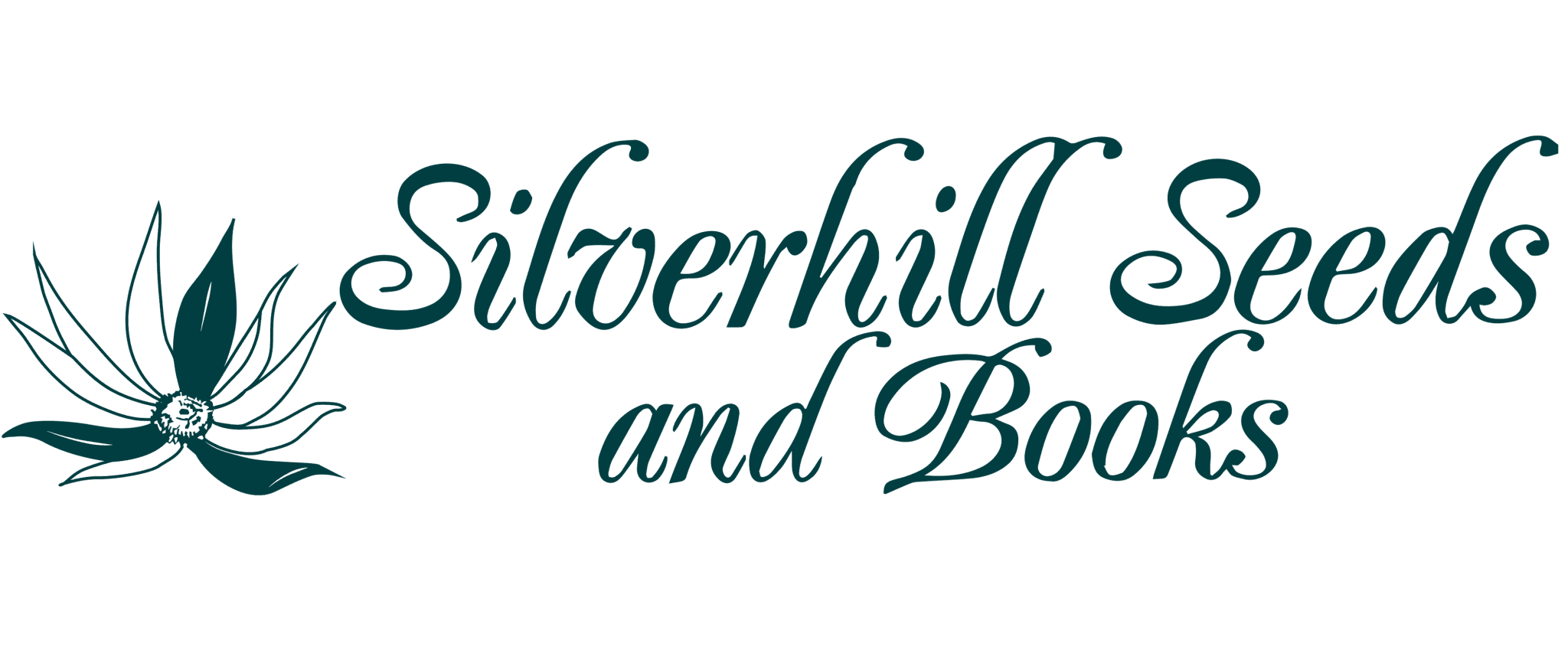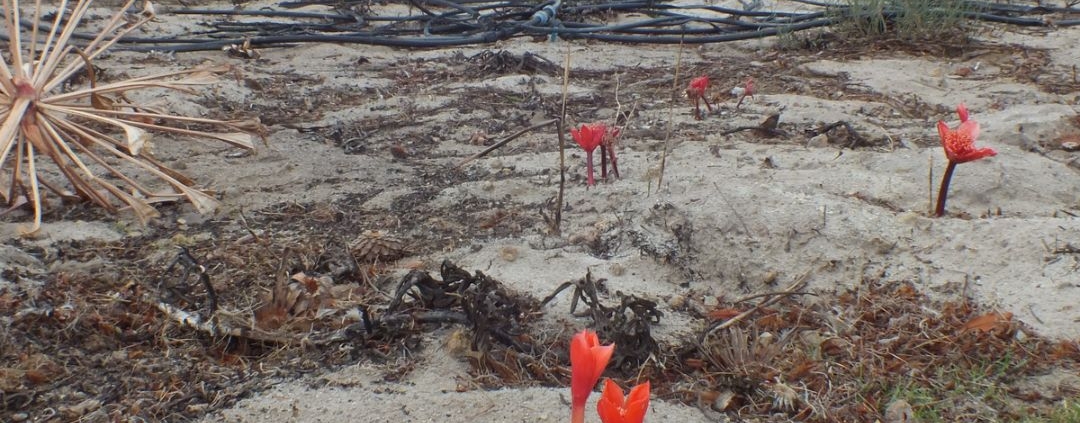From the Archives: Newsletter January 2004
Newsletter January 2004
Dear plant lover,
It seems such a long time ago that we wrote the last newsletter in July – so much has happened and the time has sped past.
Firstly we have taken the plunge and moved Silverhill Seeds and Books to commercial premises in Diep River, a suburb about 8km from our house in Kenilworth in Cape Town. Please note the change in telephone and fax numbers on our letter head. All other details – postal address and e mail address remain the same, but if you wish to come and collect your seeds, please phone beforehand and find out where we are. The premises we now occupy are very pleasant in a light industrial/commercial park. We are in the loft of a building, we have about 200m2 of space, sufficient parking for all our cars and we look out over the roof tops towards Table Mountain. We have a garden of about 1 meter2 and we are in the process of planting up a number of pots to beautify our parking area. The factory opposite us manufactures bullet proof vests, but there are also a number of more civilised businesses, such as several book suppliers, furniture manufacturers and computer consultants in the Park, so we are not alone. The whole complex is surrounded by a large wall and is patrolled regularly by security guards, and we feel safe working here at weekends and after hours. We all miss the cat, the garden and the swimming pool at our previous premises, but we do not miss the neighbour! Rod and Darkie have yet to make the move to Diep River (they are still working in Kenilworth), but they will both move in the New Year. It is a pity that moves are always accompanied by the spending of large amounts of money – insulation in the ceilings, air conditioners, new shelving, window blinds, etc etc, but hopefully this is the last move for many years!
Secondly, some bad news – for the first time in 12 years, our £ and US$ prices have had to increase this year. Since we took over Parsley’s Cape Seeds many years ago, our prices have remained £1.20 or US$2 per packet. Over the years the South African rand devalued markedly, and this was sufficient to keep up with our inflation, and it allowed us to keep the prices the same. However, this year the rand has strengthened by over 30%, our inflation rate is about 8%, and finally we can no longer put off a price increase. So prices are now £1.80 or US$3 per packet. We are sorry about this, but everything from paper to postage to petrol to potting soil has increased in price, and we can no longer keep up.
And thirdly, the Biodiversity Bill. The Bill (mentioned in our last newsletter) is going through Parliament, more or less unchanged, and we await the results anxiously. One of the driving forces for the Bill is that certain individuals in South Africa feel that the world has stolen our flora, and little has come back to South Africa in the way of royalties for plants such as Freesias, Gladioli and Proteas, all originally from this country. What they seem to have conveniently forgotten about is that South Africa makes a lot of money from flora that we have imported from elsewhere – the vines that feed our huge wine industry, the wheat and tobacco and fruit and cut flowers such as roses – and we certainly don’t pay royalties to the countries of origin of these products! Anyway, what we are now trying to do is to encourage any of you, our customers, who make selections from our seeds, or who use our seeds for a hybridisation programme, or for a pharmaceutical programme, to ask permission before you do this. We will ask you to sign an agreement with us so that if you produce a “winning plant” or a “miracle cure”, a small royalty is paid back to South Africa. We hope that this will help to alleviate any future problems.
At present the whole sub-continent of Africa is in the grip of a most horrendous drought. Both summer and winter rainfall regions are very dry and what rain does fall is in the form of light showers which quickly evaporate. The SW Cape had its first good front of the winter in August this year (normally in May) and this was the first rain that Namaqualand and the Nieuwoudtville areas received.. The front was accompanied by extreme cold with snow falling and lying on Table Mountain in Cape Town for 2 days running. On some of the inland ranges, there was snow right down to about 200 meters above sea level, and Stellenbosch had snow almost into the town. The same storm drove a container ship Maersk Zeeland onto the beach at Milnerton, right outside the Cape Town harbour. It took a dredger and our most powerful salvage tugs about 6 weeks to get the ship off the sand bank – we thought it was there forever! Some of the containers contained toxic chemicals (these containers were lifted off the ship by helicopter) and one was filled with Tulip bulbs!
Coinciding with the cold front, the Indigenous Bulb Association of South Africa held its conference at a hot spring in Worcester. We are both on the IBSA committee, so were both very involved in this conference, which was held in one of the worst “flower years” ever! Nobody had enough warm clothes and the hot spring pools were one of the most popular places at the resort! Fortunately the weather cleared up for the field trips, but because of the previous dry conditions there were very few bulbs in flower to show the delegates, and we had to resort to admiring individual plants instead of the big sheets of flowers that we had hoped for.
In Namaqualand there was no floral display at all in August or September. A few daring annuals germinated in August after the rain, and they provided a small display in October, long after all the tourists had gone home! Fortunately for us, our annuals at the tissue culture lab in Brackenfell flowered well and produced a lot of seed, so we were able to collect that to boost our stocks. One of our new offers is Dorotheanthus in separate colours, rather than mixed. We have a nice orange selection, a yellow with a red eye (used to be Dorotheanthus occulata in some of the old books), and a shocking pink, a hue which is bright enough to make you blink!
A result of the fire we had in February at the lab property was a wonderful display of both annuals and bulbs in September. The area had not burned for many years, and the first flowers were Haemanthus pubescens ssp pubescens in March. There were probably 50 or 60 plants in flower, and they were spectacular against the black ground. Then in August and September the annuals began and so did the Pelargonium triste, Babiana ambigua and ringens, Wurmbea species, Gladiolus carinatus, several orchids and hundreds of bright yellow sweetly scented Moraea fugax. In October Ixia curta flowered in places we did not know they existed and then suddenly, everything dried up, went to seed and now there is nothing to see bar sand, Proteas and restios. All our seed cleaning trash together with all our old seed is used as mulch at Brackenfell, and this year our first Protea plant from this “trash” flowered – a lovely Protea burchellii!
Our big multi-span glasshouse at Brackenfell is now fully operational and equipped with fans and wet walls, and when the temperature is 35°C outside, it is a pleasant 24°C inside. The first plants are in the house and are growing well. At Brackenfell we are always short of good quality water (both our boreholes produce slightly brack water), so we installed 11 large water tanks, each holding 10 000 liters, to collect the rainwater that runs off the multi-span roof. It takes only 50mm of rain to fill all 11 tanks, so our tanks have been overflowing almost all winter! Rod and Andy are now in the process of installing a pump and watering system so that the water can be used inside the house.
Our week in the Drakensberg in July at the Mountain Club’s annual camp was most relaxing. The ‘Berg in winter is one of the most beautiful places imaginable – clear blue skies and grass in every shade of brown, but we had forgotten how cold it is! Most mornings start at about -8°C just before sunrise, but as soon as the sun reaches the tent, the temperature rises fast until by tea time it is about 20°C and one is walking in shorts and T-shirts and swimming in every pool one finds (well, some of us are!). We didn’t mention plants once during the whole week, which must be a record, but we made up for it in the next week, when we went to Mozambique. We went on a field trip to the southern part of Mozambique with about 12 of the most knowledgeable plant people we have ever met from the Nelspruit area (in the eastern part of the country), and the talk from morning to night was plants! It was a most stimulating trip and we are now itching to get back to see more of Mozambique, although malaria is still a big worry, as are land mines.
The minute this catalogue has been delivered to the printer, we are leaving for the eastern Cape and the Nelspruit area to look for early flowering plants. Normally our first trip to the summer rainfall areas is in January, and each year we miss a number of plants that flower in spring and early summer. Last year when we went north for the solar eclipse we got a glimpse of some interesting areas, but the lack of rain meant few flowers. This year the rain has been a little better, so we hope to find some species in flower.
Our staff situation remains the same as last year with Frances, Ondine, Darkie, Antonia, Cherry and Rachel’s mother all still with us. For all of them the move to Diep River has been advantageous as all of them live very close to our office. The only people who now have to travel are Darkie and us!
Happy gardening and we all hope for rain and a peaceful year,
Rod & Rachel Saunders



